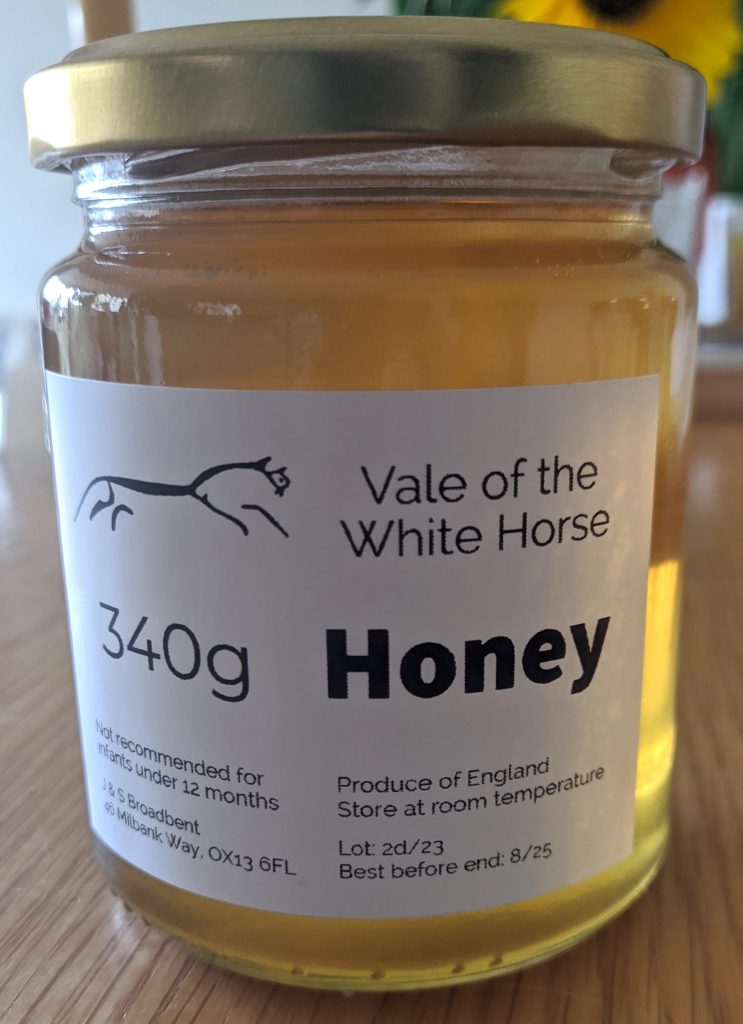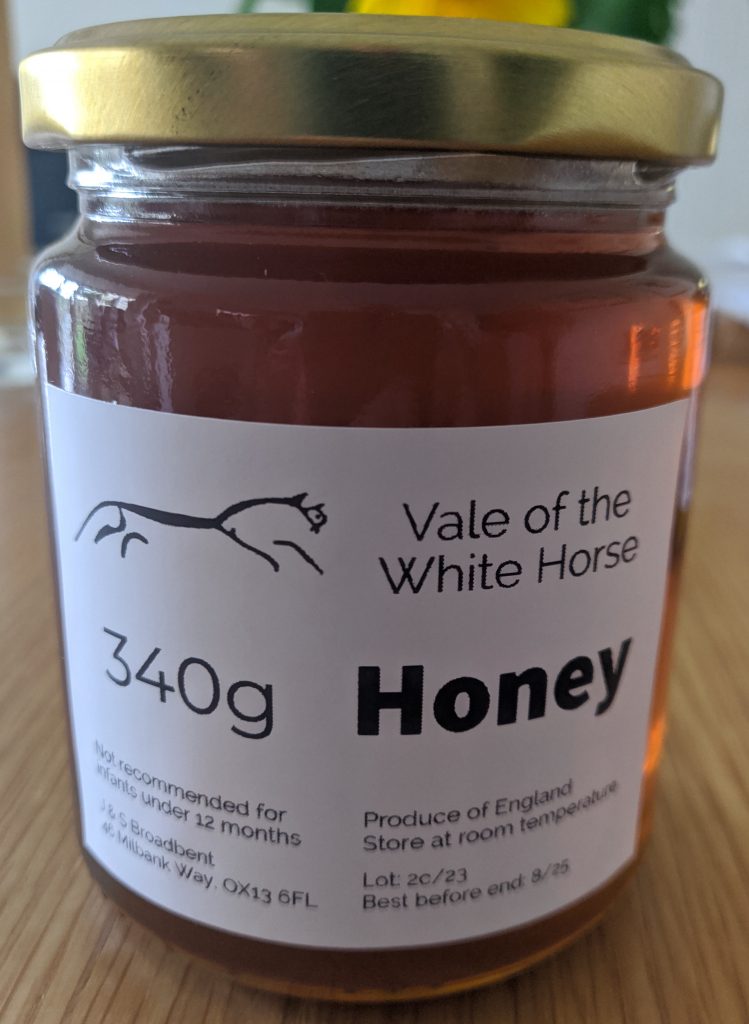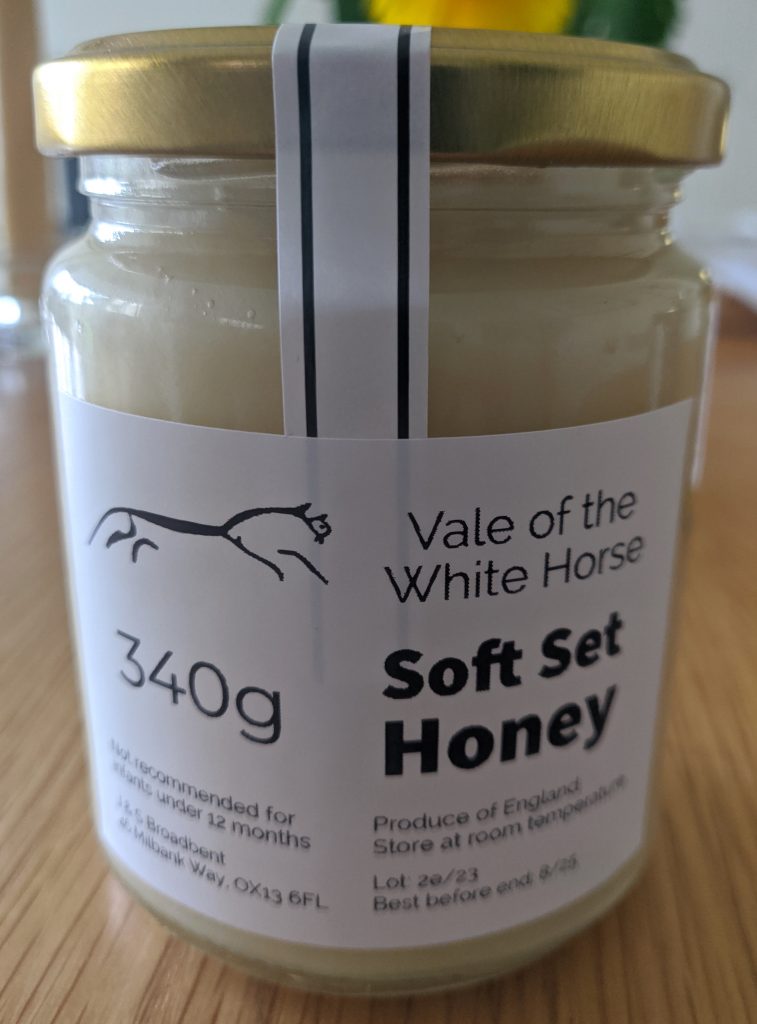We produce honey throughout the season. Each super from each hive is extracted separately into its own bucket. We could blend it all together, but we love seeing the colour, taste and consistency change throughout the year. Even 2 hives within 1 metre of each other may produce entirely different honey. It all depends what plants each hives foragers have found to collect from.

Spring Honey At the start of the season, the honey is generally mild in flavour and light in colour. If the bees have collected nectar from oil seed rape, the honey produced will set in a matter of weeks. Other spring sources of nectar and pollen are: crocus, snowdrop, hazel, blackthorn, hawthorn and dandelion. Dandelion will add a distinctive yellowy/orange colour and its flavour is quite distinctive.
Summer Honey Summer honey tends to be darker in colour, with a stronger taste. Sources include lime trees, raspberries and blackberries, clover and many garden plants. Field beans can also be a good source.

Autumn Honey In the Autumn, honeybees can struggle for nectar and are starting to think about Winter. Sources include garden plants such as verbena and dahlias and wild flowers such as rosebay willow herb and himalayan balsam (it is obvious when this is being collected as the hive entrance is covered in ‘ghost’ bees covered from head to foot in white pollen). The final, but important, plant is ivy. This produces a very strongly scented and flavoured honey which people either love or hate. It is the marmite of honey. It also sets rock hard, so hard that sometimes even the bees cannot use it. Once set it is so difficult to extract that it’s just not worth it and it is best left to the bees.

Soft Set All pure honey will eventually set. We collect each super’s worth of honey in a 30lb bucket (a full super will normally give around 25lb) and store covered up in a cool dark place until needed. Depending on the glucose and fructose content each bucket will set at a different rate, which also determines sugar crystal size. Slow setting honey tends to grow large crunchy (sharp!) crystals, while quick setting honey has smaller, smoother crystals. When we want to make soft set honey, we will pick out a bucket that has a naturally fine texture. 10% is removed and ground in a pestle and mortar to make even finer crystals. The main bucket is popped in the honey warmer and heated at around 35c (hive temperature) to 40C until completely melted. It is then cooled to room temperature and the finely ground honey added. The idea is that these fine crystals ‘seed’ the honey so that it all sets at the fine crystal size. The bucket is stirred or churned every couple of days until it is ready to be jarred. This is the way we make it – you can just seed any liquid honey, but I find choosing a naturally fine grained honey to start with works best.
The ideal setting temperature for soft set is 14C – challenging in the middle of Summer. In 2022, as temperatures hit 35C+ we just couldn’t get the honey to set satisfactorily. This year has been much better and we have been able to produce an exceptional soft set. No, really, it is incredible 🙂 To evaluate soft set, remove the lid and the surface of the honey should be dry and firm – tilt the jar to horizontal and the honey should stay where it is in the jar. Under the dry surface, you should find a buttery texture that is easy to spread on toast or crumpets and which has a smooth texture on the tongue.